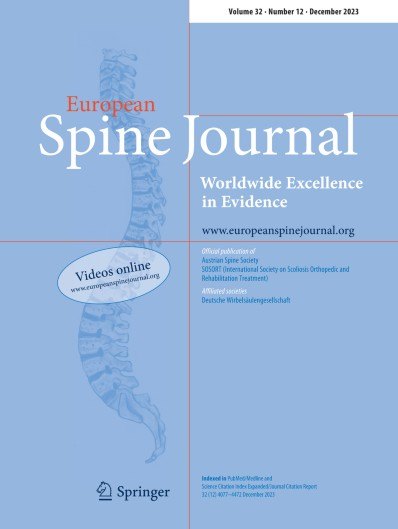
No clinically relevant difference between surgical methods for sciatica and herniated disc

No clinically relevant difference between surgical methods for sciatica and herniated disc
Surgical techniques for sciatica due to herniated disc, a systematic review
Eur Spine J. 2012 Nov;21(11):2232-51. doi: 10.1007/s00586-012-2422-9. Epub 2012 Jul 20Did you know you're eligible to earn 0.5 CME credits for reading this report? Click Here
OE EXCLUSIVE
Dr. Wilco Jacobs discusses his systematic review assessing surgical techniques for sciatica due to herniated disc.
Synopsis
This systematic review and meta-analysis included 16 studies comparing surgical techniques for patients with sciatica due to disc herniation. Results demonstrated that microscopic discectomy resulted in reduced postoperative leg pain, shorter hospitalization, shorter incision length and longer operation time than conventional discectomy. Mixed results were found from studies comparing tubular discectomy and microscopic discectomy.
Were the search methods used to find evidence (original research) on the primary question or questions stated?
Was the search for evidence reasonably comprehensive?
Were the criteria used for deciding which studies to include in the overview reported?
Was the bias in the selection of studies avoided?
Were the criteria used for assessing the validity of the included studies reported?
Was the validity of all of the studies referred to in the text assessed with use of appropriate criteria (either in selecting the studies for inclusion or in analyzing the studies that were cited)?
Were the methods used to combine the findings of the relevant studies (to reach a conclusion) reported?
Were the findings of the relevant studies combined appropriately relative to the primary question that the overview addresses?
Were the conclusions made by the author or authors supported by the data and or analysis reported in the overview?
How would you rate the scientific quality of this evidence?
Yes = 1
Uncertain = 0.5
Not Relevant = 0
No = 0
The Reporting Criteria Assessment evaluates the transparency with which authors report the methodological and trial characteristics of the trial within the publication. The assessment is divided into five categories which are presented below.
4/4
Introduction
4/4
Accessing Data
4/4
Analysing Data
3/4
Results
3/4
Discussion
Detsky AS, Naylor CD, O'Rourke K, McGeer AJ, L'Abbé KA. J Clin Epidemiol. 1992;45:255-65
The Fragility Index is a tool that aids in the interpretation of significant findings, providing a measure of strength for a result. The Fragility Index represents the number of consecutive events that need to be added to a dichotomous outcome to make the finding no longer significant. A small number represents a weaker finding and a large number represents a stronger finding.
Why was this study needed now?
Sciatica is usually treated with conservative care; however, surgery is considered when nonsurgical treatment fails to reduce the symptoms after at least 6 weeks. Microscopic discectomy is the most common method of surgical treatment, and it can be done using a microscope or with the use of other magnifying tools. Since the best method of discectomy has not been determined, this review aimed to compare the different techniques with respect to intraoperative and clinical outcomes in patients with sciatica and disc herniation.
What was the principal research question?
Which method of discectomy is most effective with regards to clinical and intra-operative outcomes in patients with sciatica and lumbar disc herniation?
What were the important findings?
- According to 4 studies, microscopic discectomy resulted in less leg pain than open discectomy (95 % CI 0.57-3.44; p=0.006)
- 6 studies indicated that microscopic discectomy led to an increase in operation time when compared to open discectomy (pooled result: 12.2 min; 95% CI 2.20-22.3; p = 0.02)
- According to 2 studies, microscopic discectomy resulted in a shorter incision length than open discectomy
- Patients from 1 study who received micro-endoscopic discectomy (MED) had a significantly shorter hospital stay (3.6 vs. 5.9 days) and less intra-operative blood loss (88 vs 190 ml) than those who received open discectomy; However, the MED group had a longer operation time than the open discectomy group (109 vs. 72 min)
- 1 study indicated that tubular discectomy resulted in faster improvement in pain than conventional discectomy, whereas another study demonstrated the opposite at 2 years. Tubular discectomy also resulted in less post-operative analgesic consumption (1 study), shorter incision length (3 studies), shorter length of hospital stay (2 of 4 studies), and shorter operation time (2 of 3 studies) than conventional discectomy.
- 1 study with high risk of bias indicated that there was no difference between percutaneous endoscopic discectomy and microscopic discectomy in clinical outcomes.
- According to 1 study, sequestrectomy did not differ from standard microdiscectomy with respect to back and leg pain or in quality of life at 2 years.
What should I remember most?
There were few differences between open discectomy, microscopic discectomy, and tubular discectomy. Some studies reported less leg pain, shorter hospitalization or longer operation time with microdiscectomy compared to open discectomy.
How will this affect the care of my patients?
Conclusions regarding the most effective treatment for sciatica and lumbar disc herniation are still unclear, and further research is needed to establish superiority of one surgical technique. Further research using larger sample sizes is required in order to investigate the effectiveness and costs of the various methods of discectomy.
Learn about our AI Driven
High Impact Search Feature
Our AI driven High Impact metric calculates the impact an article will have by considering both the publishing journal and the content of the article itself. Built using the latest advances in natural language processing, OE High Impact predicts an article’s future number of citations better than impact factor alone.
Continue



 LOGIN
LOGIN

Join the Conversation
Please Login or Join to leave comments.